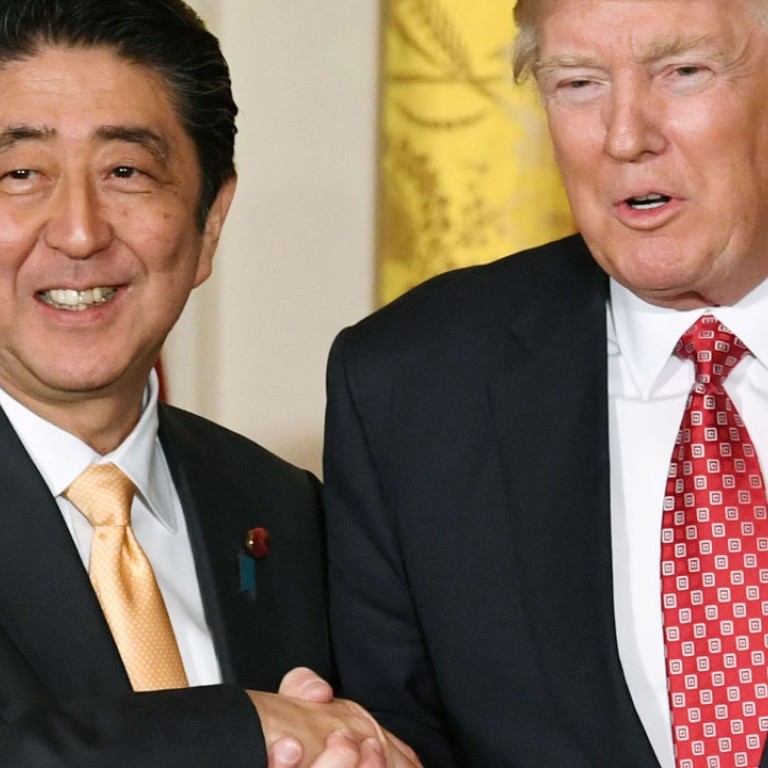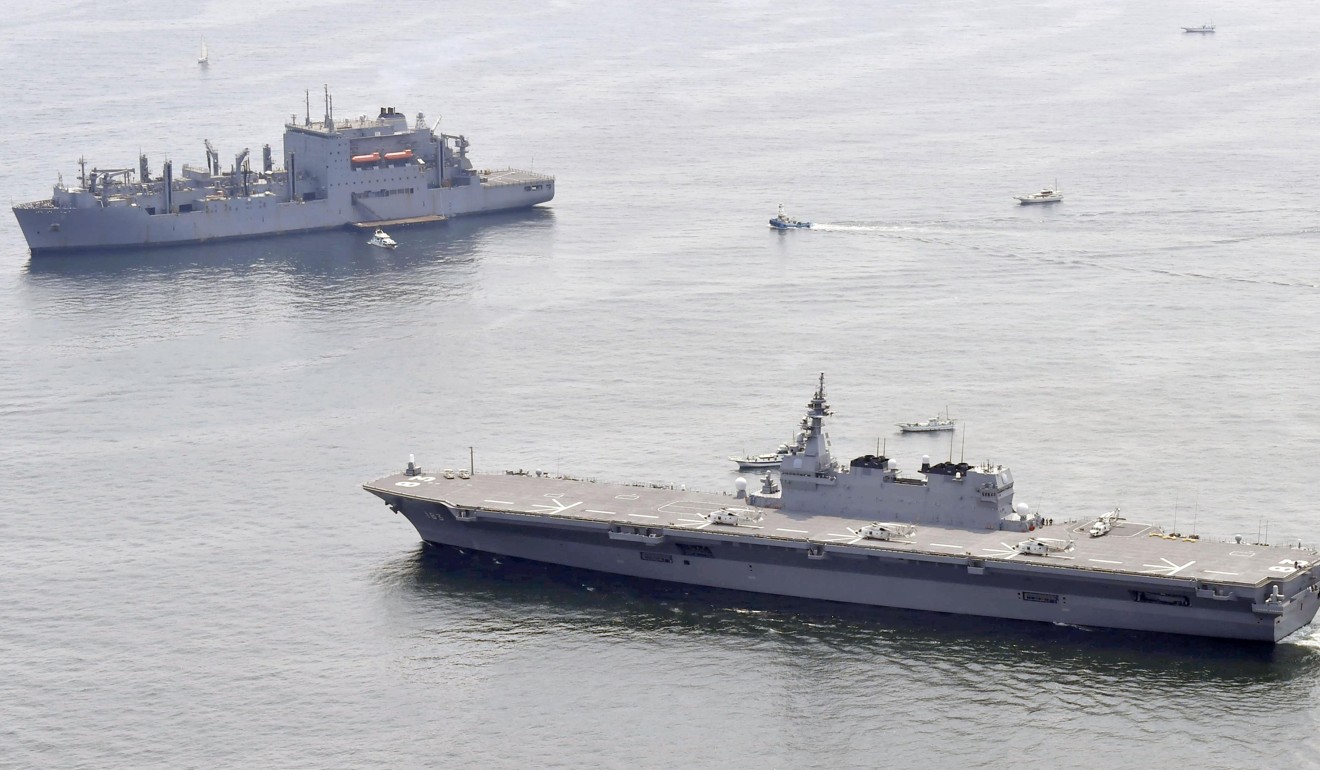
Why pacifist Japan is standing by its old friend America in naval power play
Donald Kirk says the sending of the warship Izumo to protect a US Navy supply ship, in a first for Japan’s maritime defence, stems from Tokyo’s fear of isolation, with no good friends in the region
Under Article 9 of their pacifist constitution, “the Japanese people forever renounce war as a sovereign right of the nation and the threat or use of force as means of settling international disputes”.
The Japanese are split nearly evenly over revising the constitution so their troops can operate as fully fledged US allies
Outside the conservative establishment, Japanese have mixed feelings about where they’re going militarily. A poll by news agency Kyodo shows the Japanese split nearly evenly over revising the constitution so their troops can operate as fully fledged US allies. Slightly more than half don’t want Article 9 revised under Abe and three-quarters credit adoption of the constitution 70 years ago with keeping Japan out of war.

One reason the Japanese want to work with Americans on defence is that they have no good friends in the region. At US urging, Japanese and South Korean warships may cooperate in exercises, but historical differences go too deep to imagine an alliance. The Japanese are not going to agree that the rocks they call Takeshima belong to Korea, which calls them Dokdo and clings to them as a symbol of defiance against centuries of Japanese plunder.
Donald Kirk is the author of three books and numerous articles on Korea

